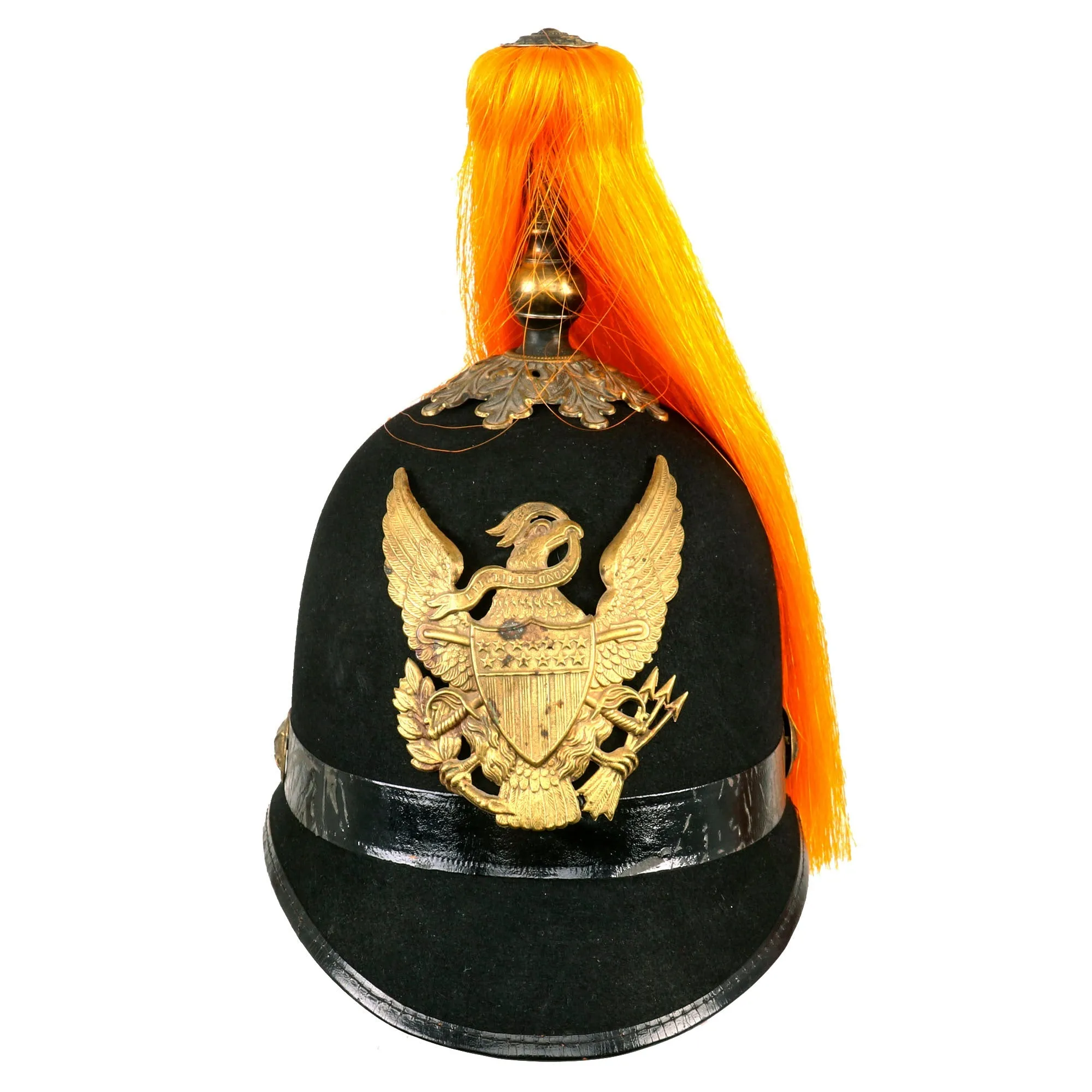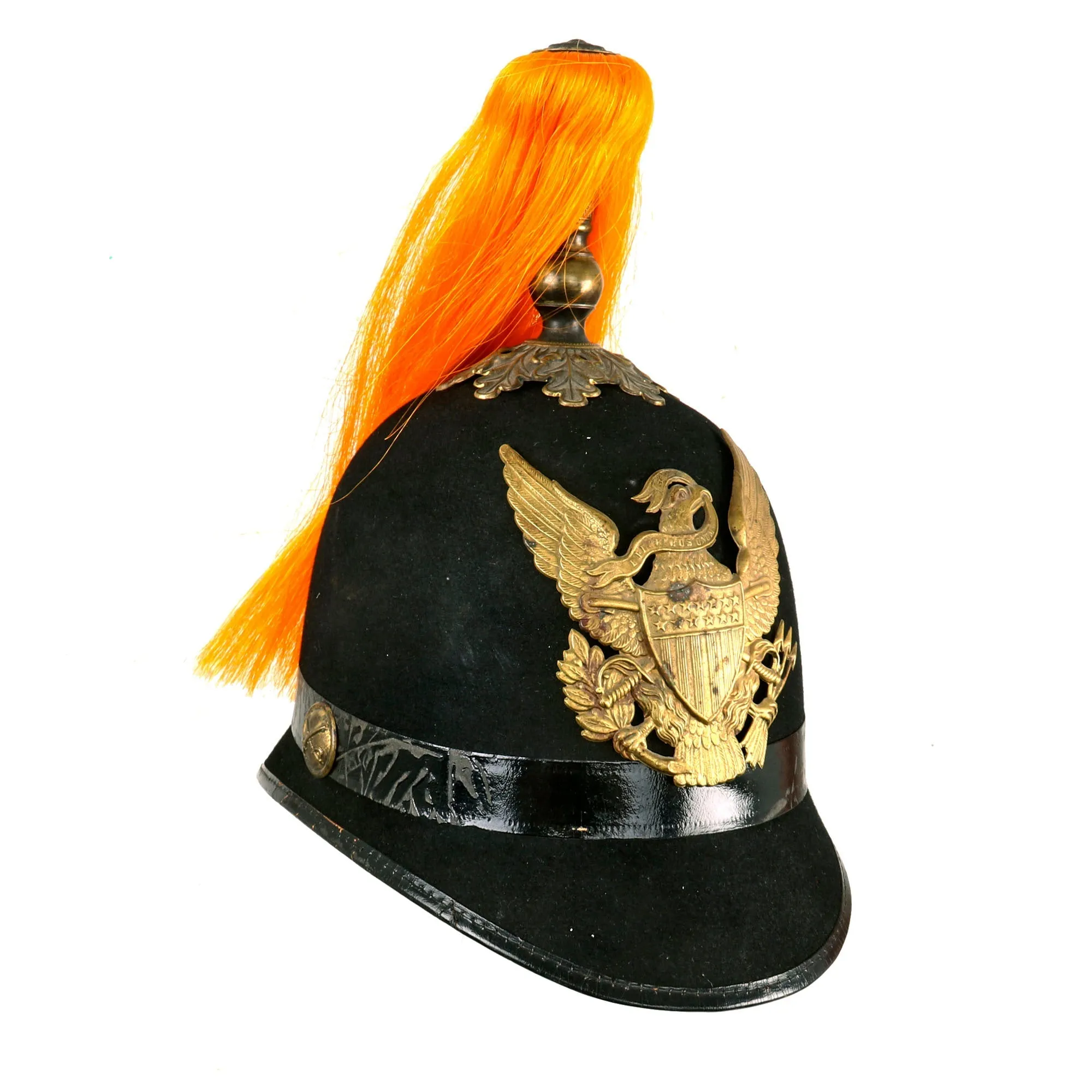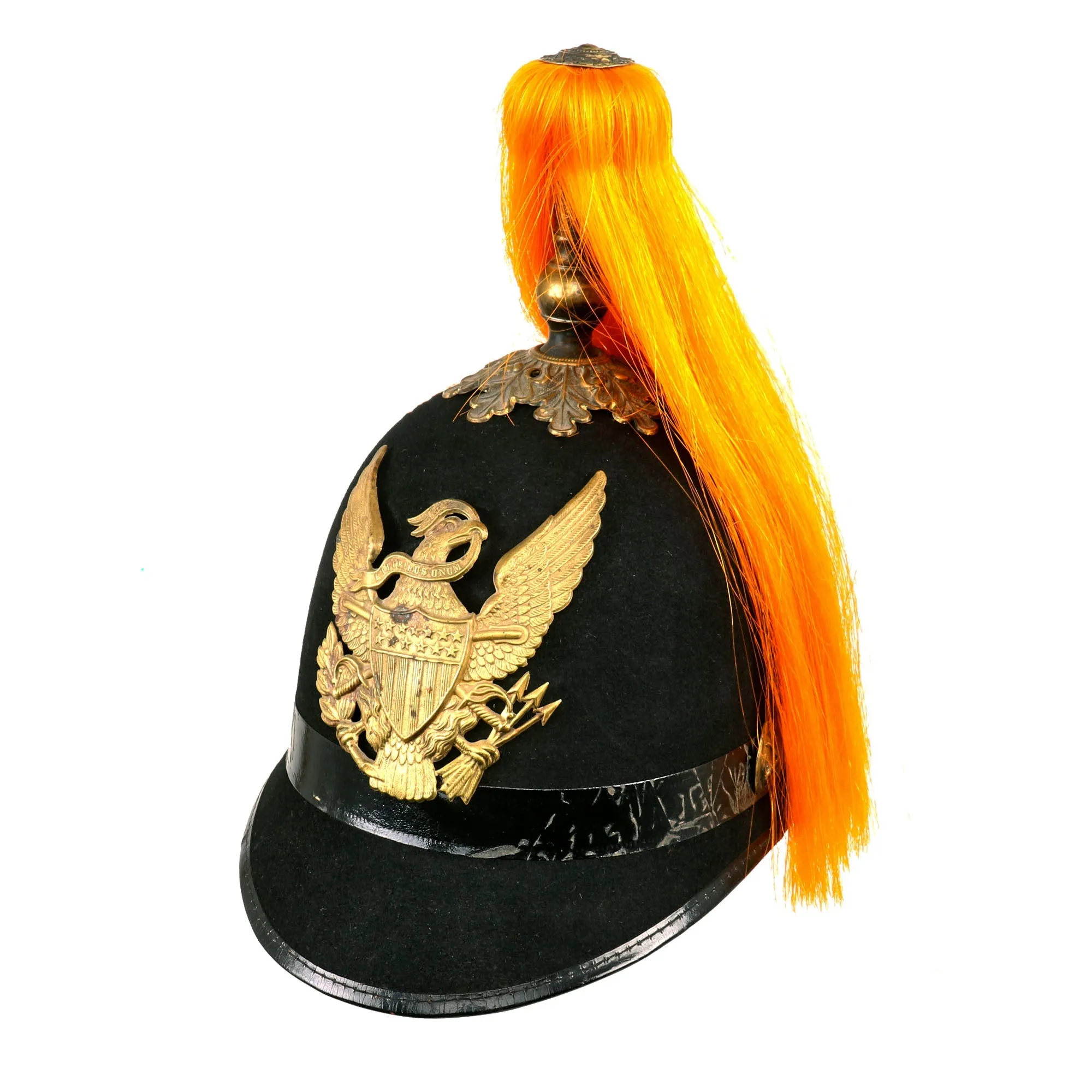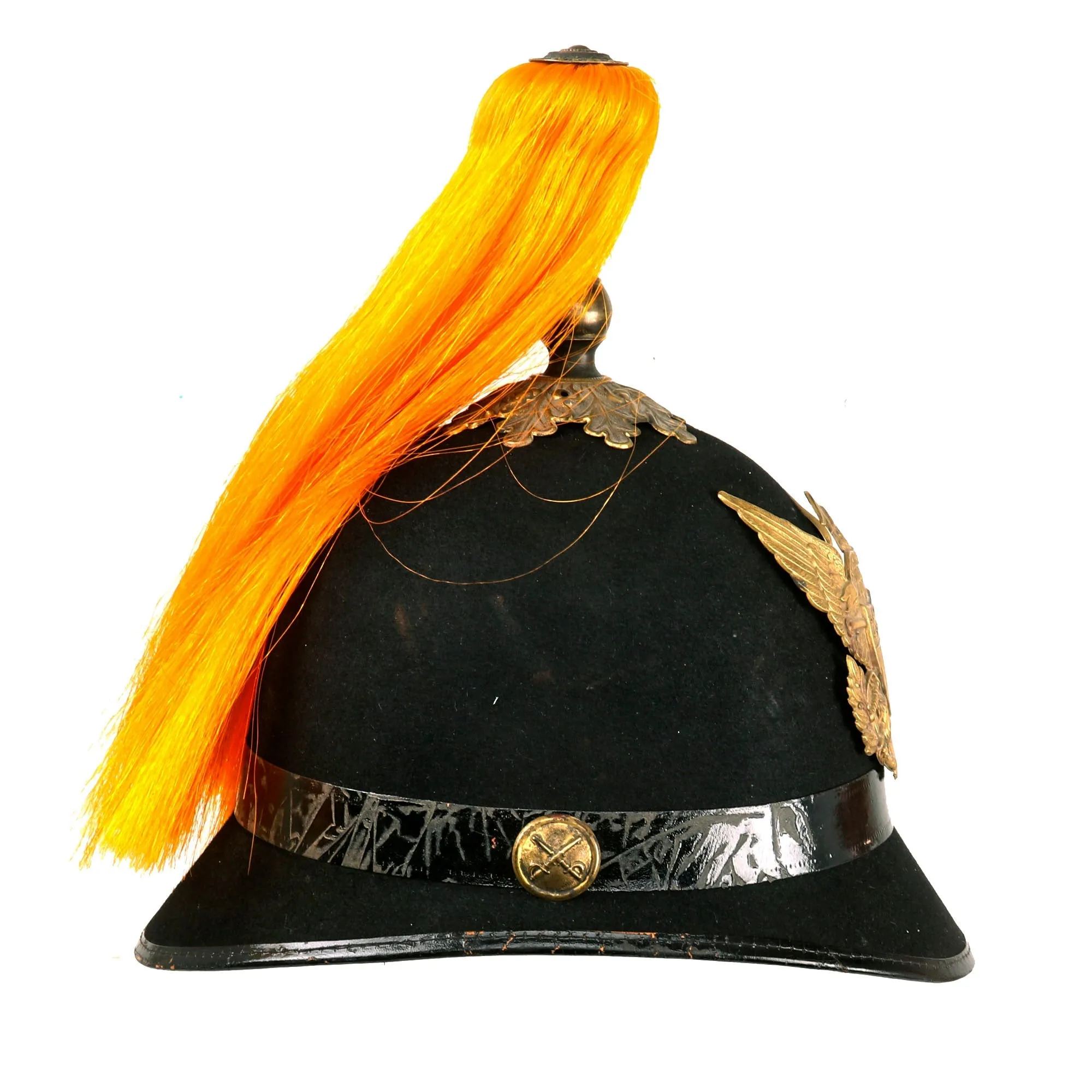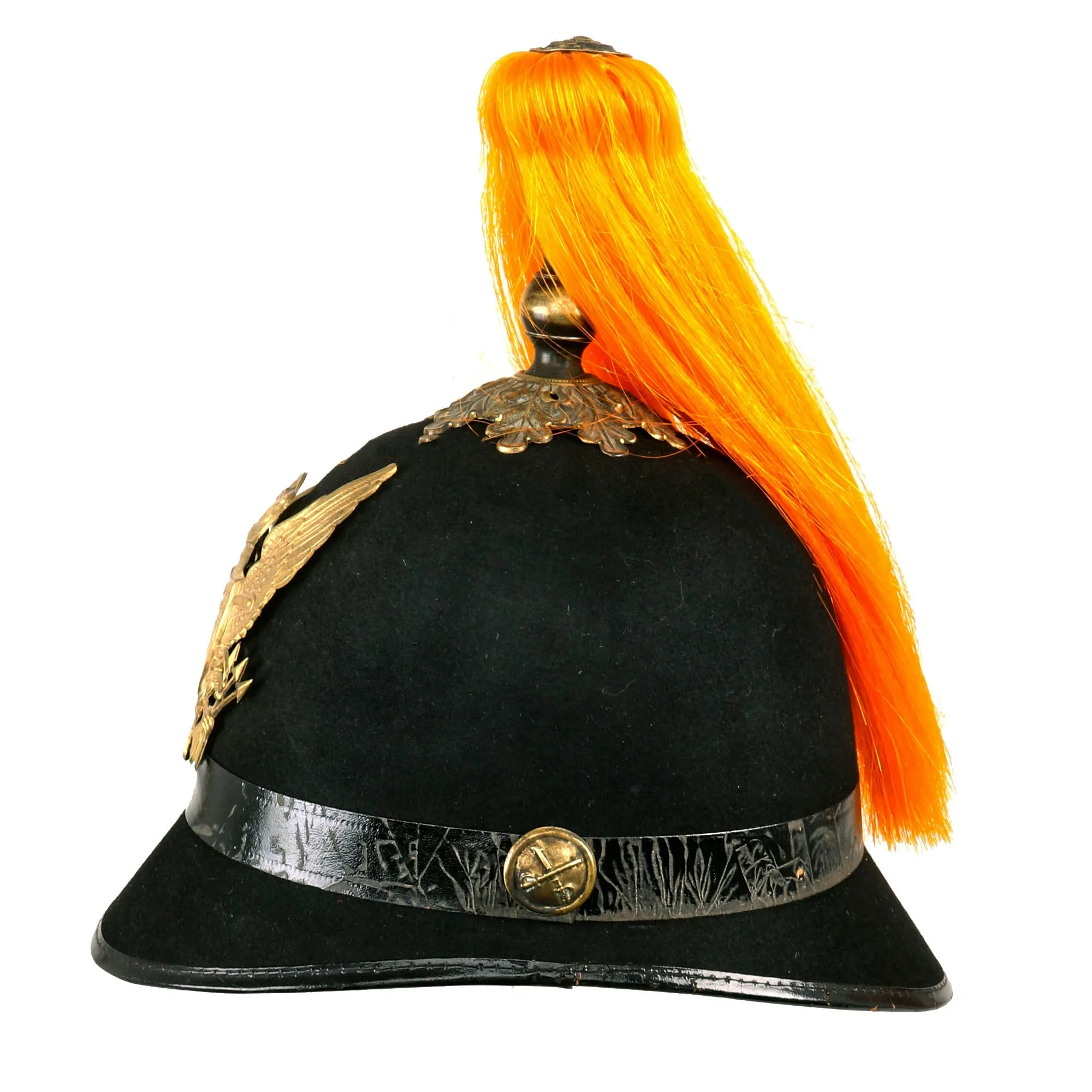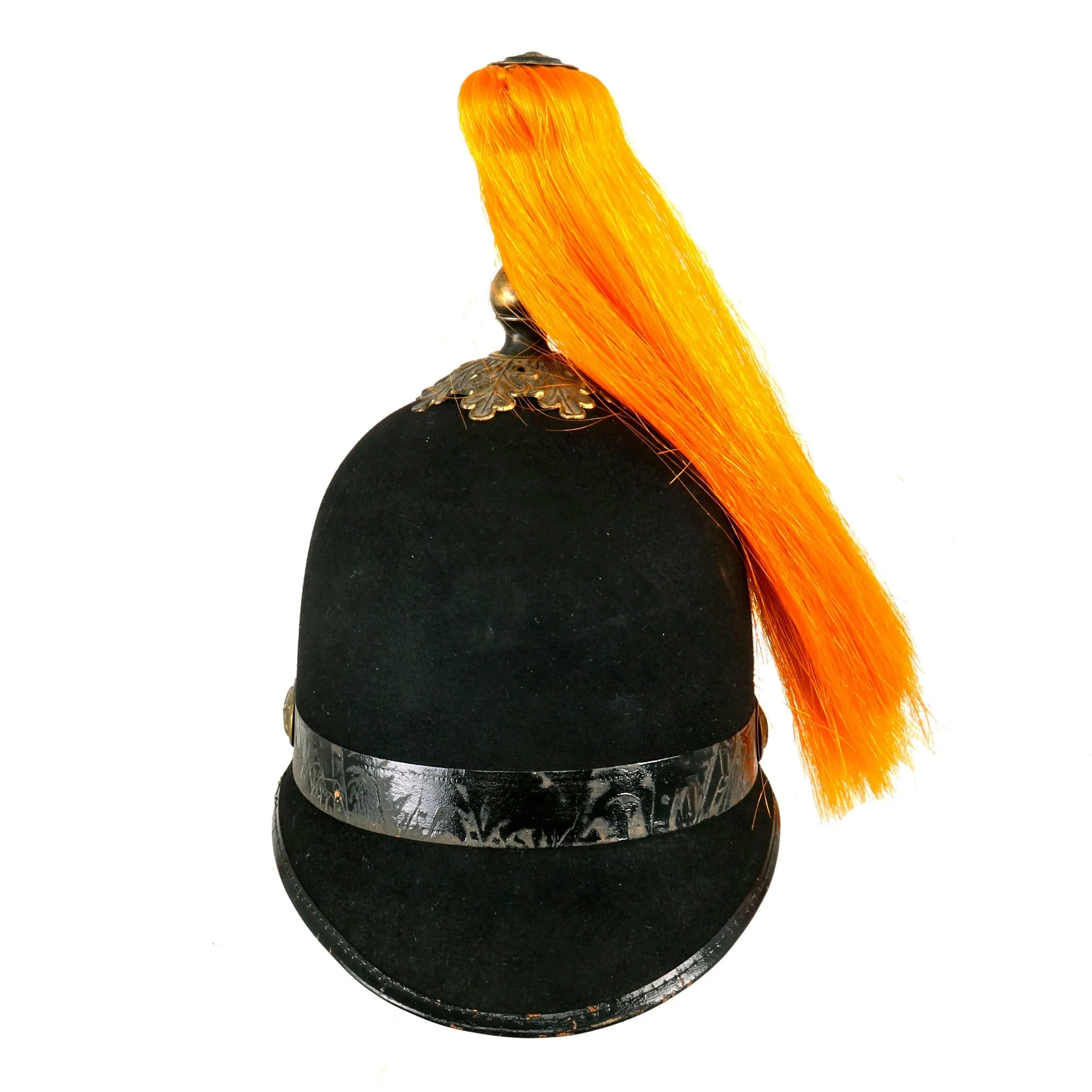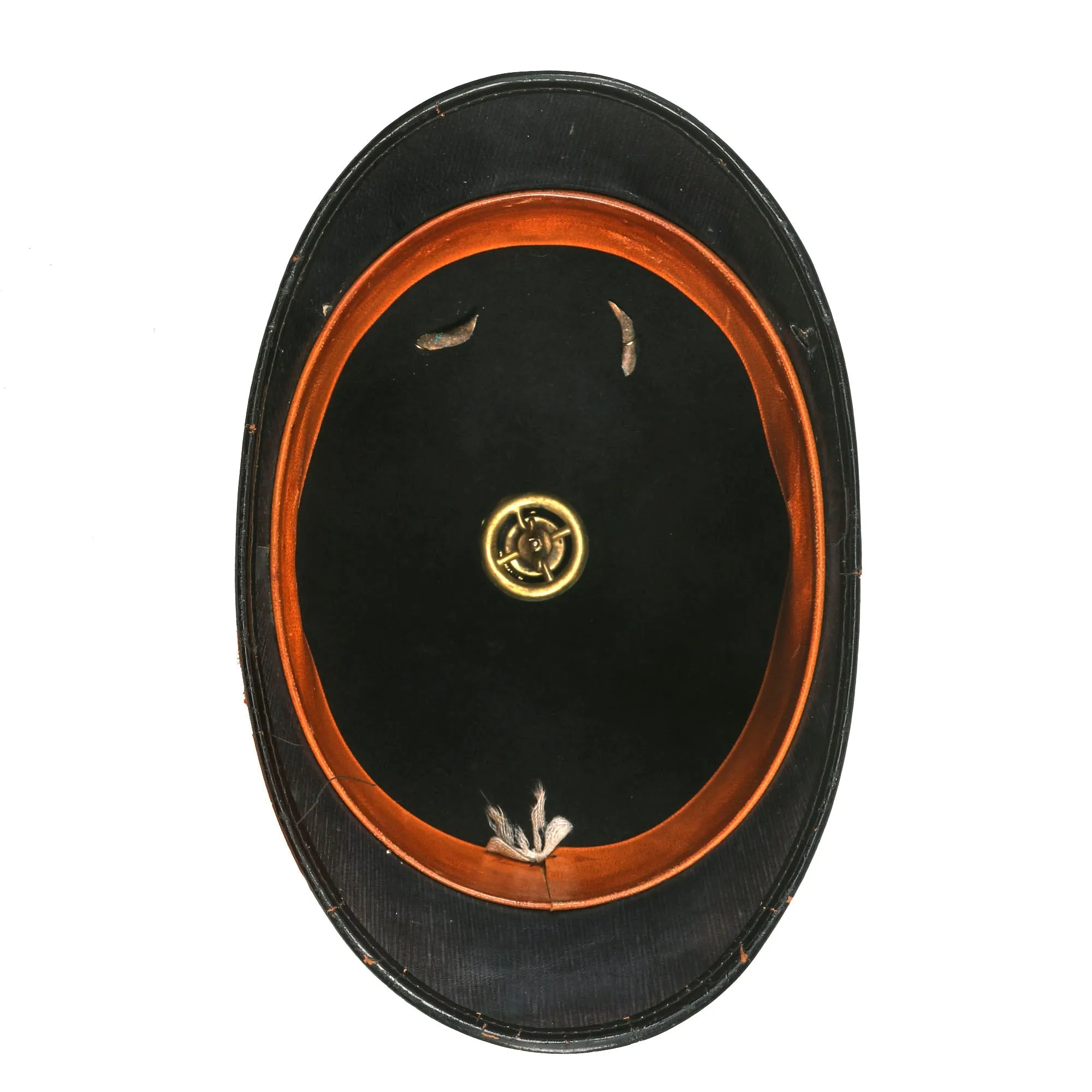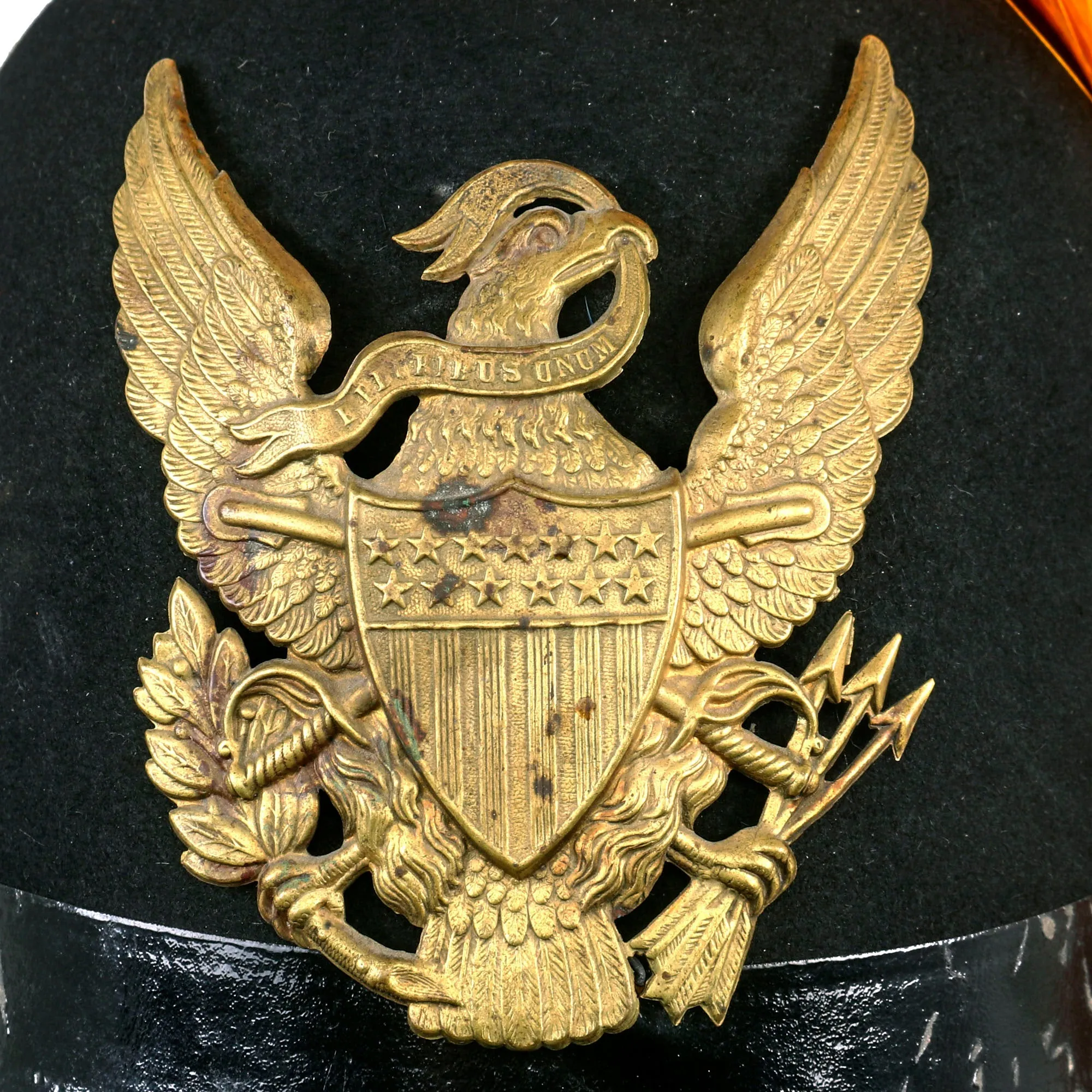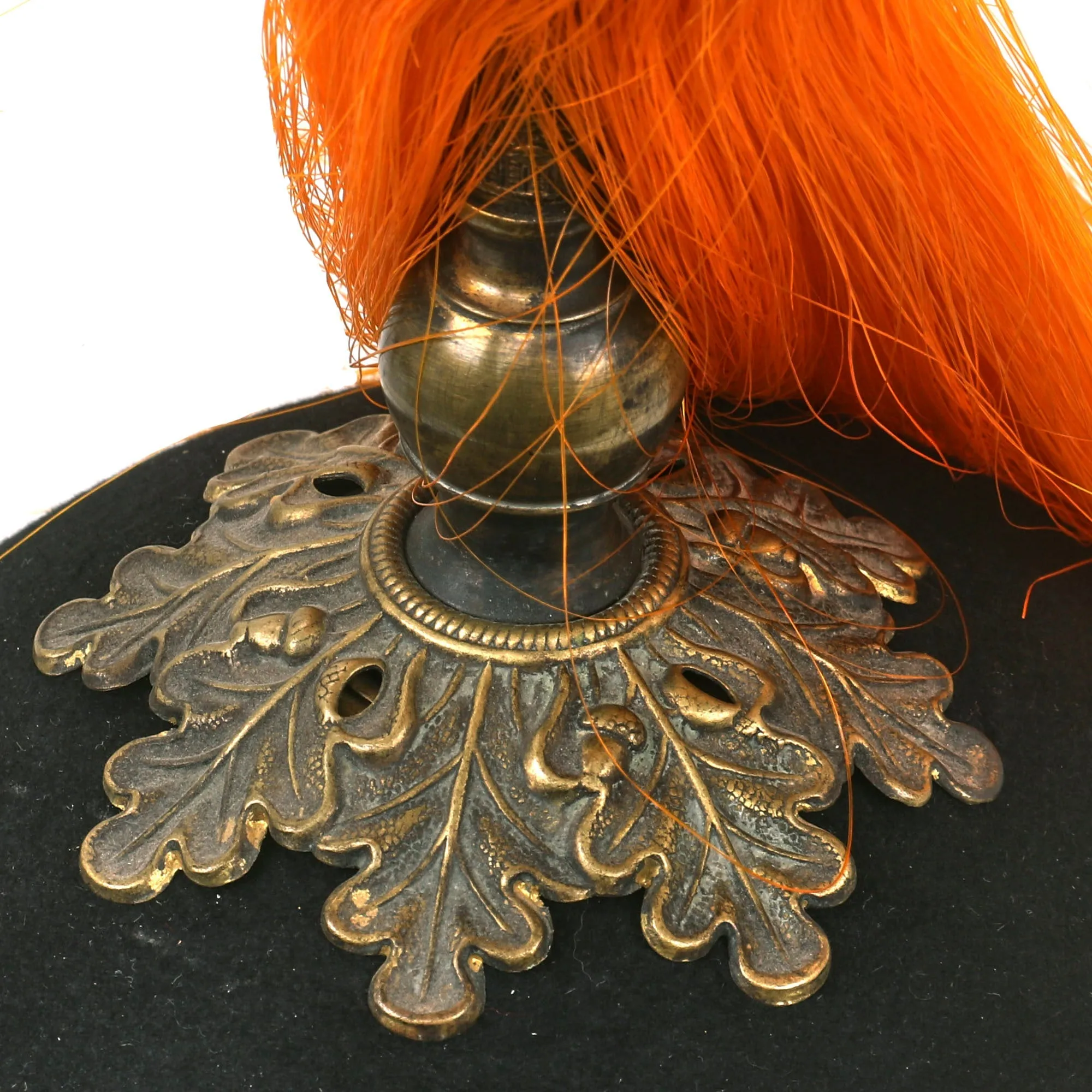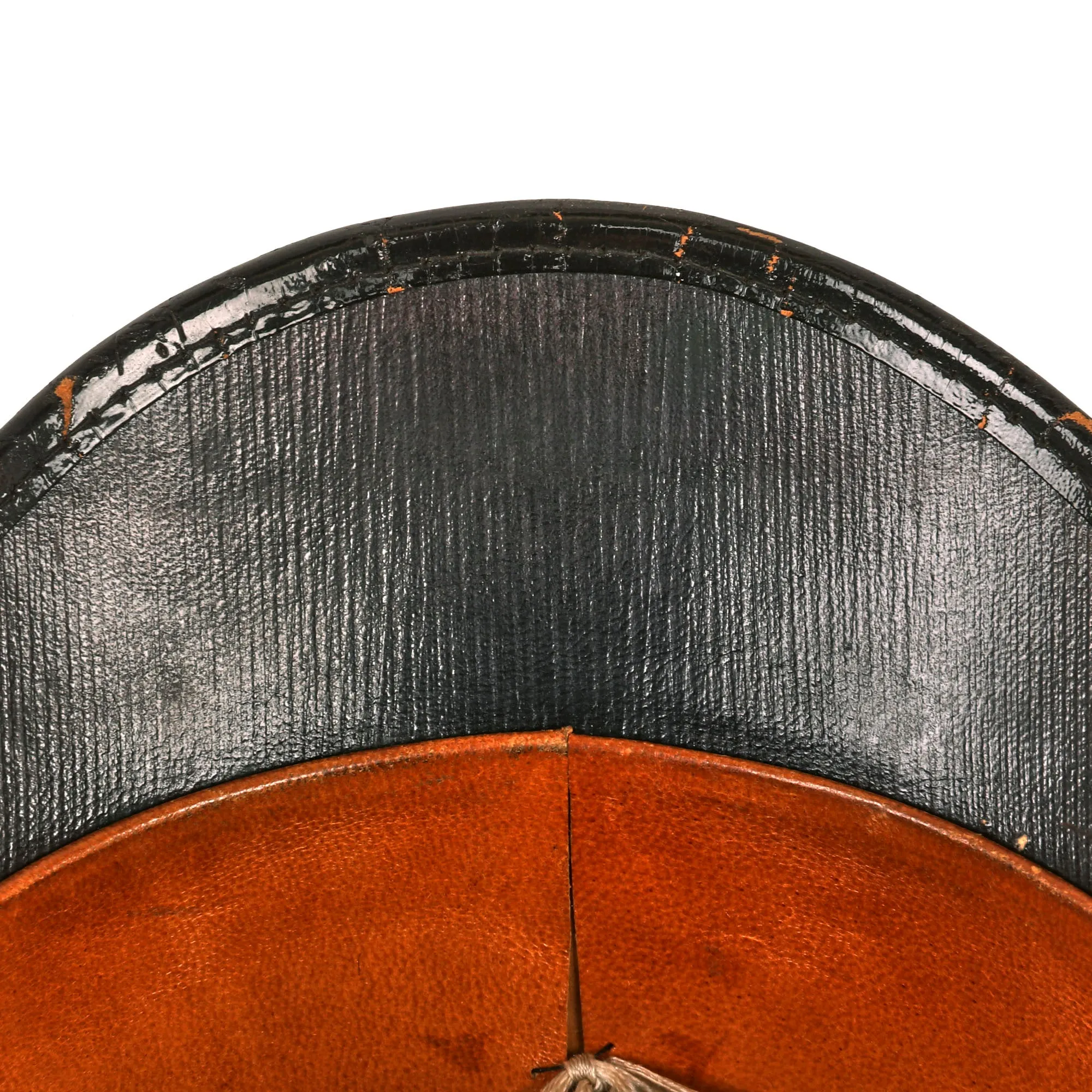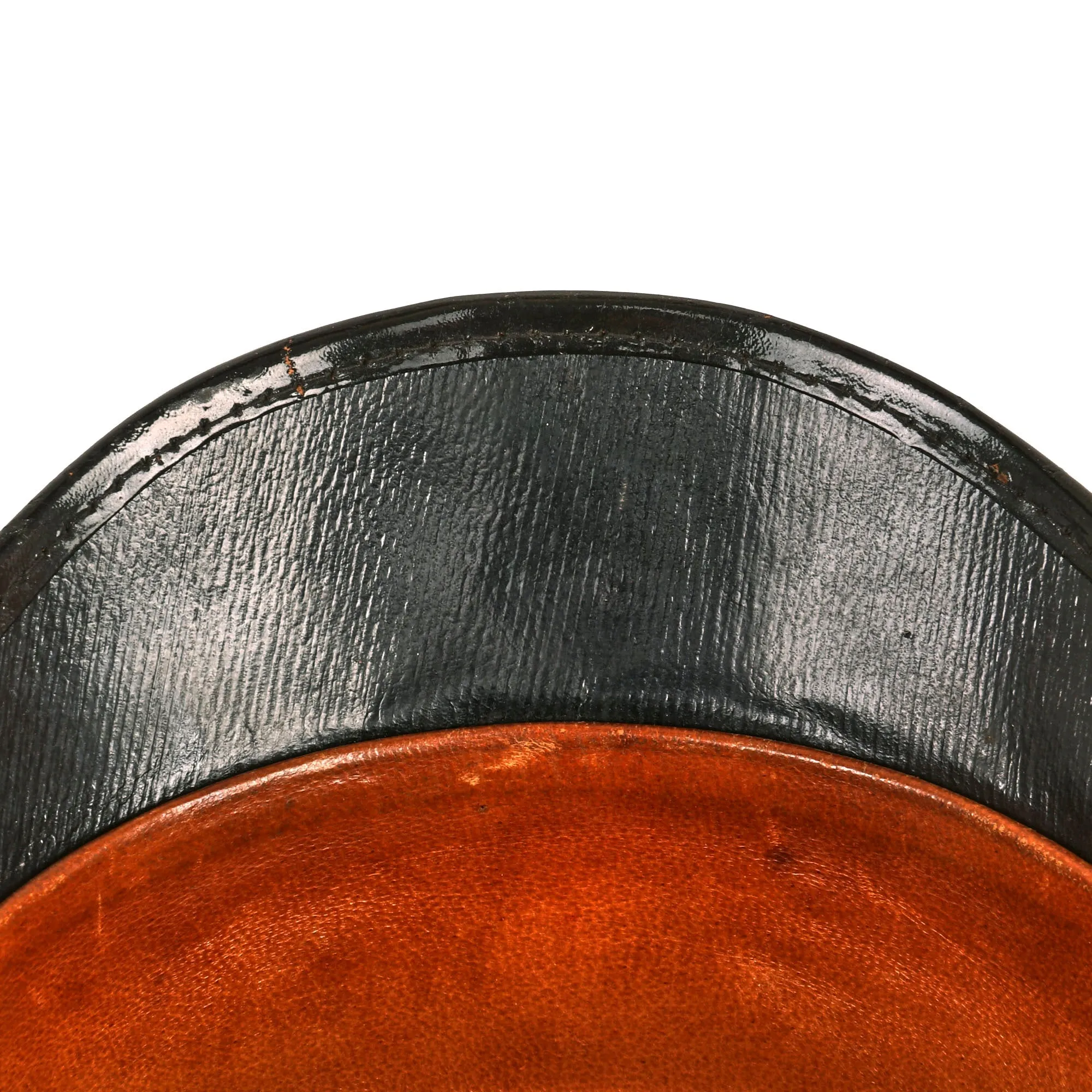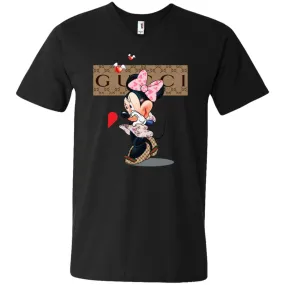Original Item: One Only. Much like our European cousins in the 1880s, the U.S. Army started to adopt spiked pith helmets, often in white, with all brass mounts and occasionally plumes. These saw active service in the Spanish American War of 1898 especially in the tropical climate in Cuba. While often referred to as "pith helmets" in the broad sense, it was made from cork, like many European variants, such as the Wolseley pattern used by the British.
This helmet dates to the late 1880s to early 1890s, and it really is quite striking. This is not the type of helmet that was worn in the field, but instead one intended for use with the "dress" uniform for ceremonial occasions. It is beautifully made from cork covered with brown fabric, with a marking under the leather sweatband reading:
Wm. H. HORSTMANN
PHILADELPHIA
Contract: March 4th, 1899
The Helmet plate displays the Great Seal of the United States, with the American Eagle with a banner in its beak stating: E PLURIBUS UNUM. The "crossed sabers" behind the shield indicate that it is for a cavalry unit. From the looks of the front plate, it is the original plate to the helmet and was not switched like ones we have seen in the past. The crossed saber cavalry side buttons are still present. The orange plume is in great shape and indicates Cavalry on this headgear. The helmet measures roughly 7 ⅛.
Very nice, great condition for age with loads of patina, ready to display!
The United States Cavalry, or U.S. Cavalry was, the designation of the mounted force of the United States Army by an act of Congress on 3 August 1861. This act converted the U.S. Army's two regiments of dragoons, one regiment of mounted riflemen, and two regiments of cavalry into one branch of service. The cavalry branch transitioned to the Armored Forces with tanks in 1940, but the term "cavalry", e.g. "armored cavalry", remains in use in the U.S. Army for mounted (ground and aviation) reconnaissance, surveillance, and target acquisition (RSTA) units based on their parent Combat Arms Regimental System (CARS) regiment. Cavalry is also used in the name of the 1st Cavalry Division for heraldic/lineage/historical purposes. Some combined arms battalions (i.e., consisting of a combination of tank and mechanized infantry companies) are designated as armor formations, while others are designated as infantry organizations. These "branch" designations are again, heraldic/lineage/historical titles derived from the CARS regiments to which the battalions are assigned.
The Mexican-American War (1846–1848) "had resulted in adding a vast territory to our national domain, and the government was bound, in the interests of civilization, to open this immense area to settlement...the country between the Missouri River and California... was occupied by powerful and warlike tribes of Indians." To protect new settlers moving into and living in the new territories, soldiers had to patrol it, but the size of the army had remained fixed. In 1855, at the request of General Winfield Scott Congress added the 1st and 2nd Cavalry regiments to the U.S. Army.
Congress originally created the 1st U.S. Dragoons in 1833. The 2nd U.S. Dragoons, and the U.S. Mounted Riflemen followed in 1836 and 1846 respectively. Prior to "1833 mounted troops were raised (in 1808 and 1812) as emergencies presented themselves and were disbanded as soon as these had passed." The newly designated forces were often influenced after American cavalry units employed during the American Revolutionary War. The traditions of the U.S. Cavalry originated with the horse-mounted force which played an important role in extending United States governance into the Western United States, especially after the American Civil War (1861–1865), with the need to cover vast ranges of territory between scattered isolated forts and outposts of the minimal resources given to the stretched thin U.S. Army.
Significant numbers of horse mounted units participated in later foreign conflicts in the Spanish–American War of 1898, and in the Western Front battlefields of Europe in World War I (1917–1918), although numbers and roles declined.
Immediately preceding World War II (1941–1945), the U.S. Cavalry began transitioning to a mechanized, mounted force. During the Second World War, the Army's cavalry units operated as horse-mounted, mechanized, or dismounted forces (infantry). The last horse-mounted cavalry charge by a U.S. Cavalry unit took place on the Bataan Peninsula, in the Philippines in early 1942. The 26th Cavalry Regiment of the allied Philippine Scouts executed the charge against Imperial Japanese Army forces near the village of Morong on 16 January 1942.
"In March 1942 the War Department eliminated the office of Chief of Cavalry...and the horse cavalry was effectively abolished." The cavalry name was absorbed into the Armor branch as part of the Army Reorganization Act of 1950. The Vietnam War saw the introduction of helicopters and operations as a helicopter-borne force with the designation of Air Cavalry, while mechanized cavalry received the designation of Armored Cavalry.
Today, cavalry designations and traditions continue with regiments of both armor and aviation units that perform the cavalry mission. The 1st Cavalry Division is the only active division in the United States Army with a cavalry designation. The division maintains a detachment of horse-mounted cavalry for ceremonial purposes.




